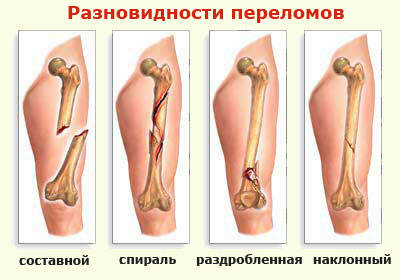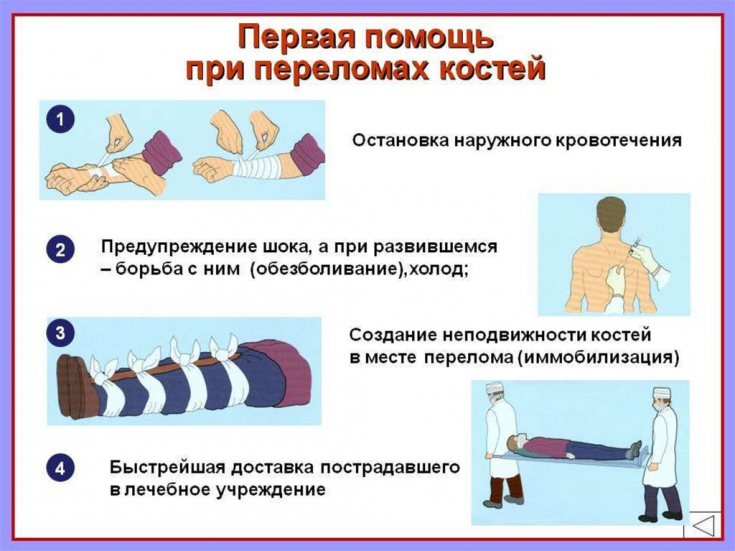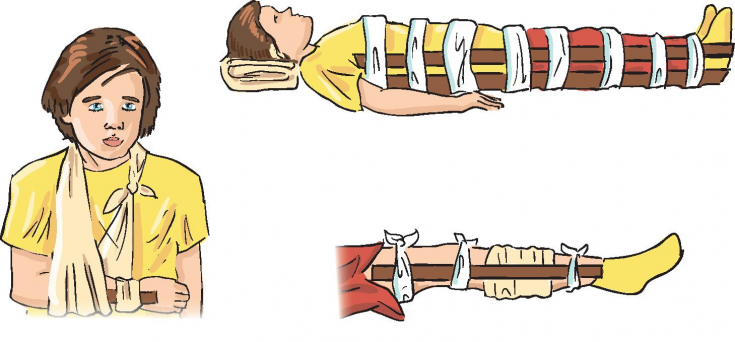You come to the playground, and a child, like a little monkey, jumps from one slide to another and does depart from the horizontal bar. Worried about his health, you try to stop the baby. Your worries are quite justified, but it is impossible to completely protect the child from dangers, but to be armed with important information is real. Bone fractures in children are common, anyone can get into a similar situation. The editors of estet-portal.com figured out the types of fractures and primary care measures. You learn about the symptoms of the phenomenon and what not to do.
- Bone fractures in children: features of damage
- What are the symptoms of fractures in toddlers
- Closed bone fractures in children: how to proceed
- Child's Open Fractures: Exploring Relief Measures
- Forbidden Treatments for Childhood Fractures
Bone fractures in children: features of damage
Children's organism differs from adult's so much that when struck by the same strength the child can avoid fracture, and adult — no. Therefore, the frequency of fractures in those who have already grown is higher, which is due to the peculiarity of the child's bone: it is flexible and elastic. And the healing process is fast, while the thick periosteum avoids displacement of the bones.
Read also: How to eat strong bones — foods for a strong skeleton

A particularly unpleasant moment is that children's fractures often occur in the area of \u200b\u200bbone growth, and this is difficult to diagnose. The fact is that instead of bone, cartilage tissue is located on the growth site, and it is difficult to see it on x-rays. The ability to recover in the bones of a child is several times higher than that of an adult, therefore, there is no scar left at the site of the lesion.
The most common fractures in children are the upper and lower extremities. And hand damage occurs 2 times more often. Localization of children's fractures of the hands — these are the bones of the forearm and elbow joint.
Read also: Injuries in children — face and head: 6 most dangerous places
What are the symptoms of fractures in toddlersWhatever part of the child's body is damaged, the symptoms of the fracture are identical. They are divided into two types — probable and credible.
probable include:
- the presence of hematomas in the places where the injury occurred;
- swelling of the skin;
- increased pain when pressing on the damaged area or movement;
- impaired mobility depending on location — hands, feet, fingers.
Reliable symptoms include:
- presence of limb deformity;
- feeling of bone fragments crunching.
Read also: Healthy lifestyle of a student — that it in includes

The life of a schoolboy is not without bruises, but if you suspect that a child has a closed fracture, then first of all, provide him with peace. Parents should also take care of themselves so that they do not additionally harm the baby.
The following first aid measures will help:
- apply ice to the fracture site to relieve the victim and stop bleeding inside;
- immobilize the damaged area of the body by taking measures to ensure the immobility of the fracture site;
- try to place the damaged area in an elevated position.
Read also: Clearly about important — first aid in pictures
Child's Open Fractures: Exploring Relief MeasuresThe main difference between an open fracture — this is an open wound, therefore, the measures are more aimed at stopping bleeding and treatment of damage. First aid consists of the following:
- if the wound is contaminated, clean it with soap and water;
- a pressure bandage will help stop the bleeding, ideally — this is a tourniquet, but in in extreme conditions, any material that tightly covers the fracture area will do;
- Provide peace to the child, distract him from disturbing thoughts, soothe;
- immobilize the damaged area.
First Aid — an important event, on which further treatment depends. But do do forget at the first suspicion of bone fractures in children, call an ambulance to give the child into hands with professionals.
Read also: Child knees hurt — causes and first aid
Forbidden techniques for helping children with fracturesYou now know what to do for first aid, but there are a number of activities that should be avoided in case of fractures. The presence of trauma in children often causes parents to fuss and do more than they are supposed to, in order to improve the condition of the baby. But many actions can only harm the baby.
So, forbidden:
- recommend the child to perform additional movements;
- tell the victim to move;
- set the damaged bone on your own;
- rub the damaged area;
- warm the fracture site;
- use various kinds of ointment on damaged area.
Read also: How to better understand your child — important tips and useful literature for parents

It is impossible to imagine a child who has never fallen or hurt himself for a month. The daily activity of the crumbs, the desire to know the world and feel more positive emotions is manifested every day. How to avoid fractures?
Don't lock your baby in the room, but on the contrary, let the baby move, thus strengthening the joints and muscles. Bone fractures in children — a phenomenon from which no one is insured, but
to overprotect a child — no way out of the situation. Knowing everything about first aid for injuries, you will always be able to help your child. An active child is always cheerful and cheerful, let him please his parents in this way.
Read also: How to teach your child to be independent — 10 golden rules
You may be interested in: Stone massage or stone massage - what is it? Watch the video.






Add a comment